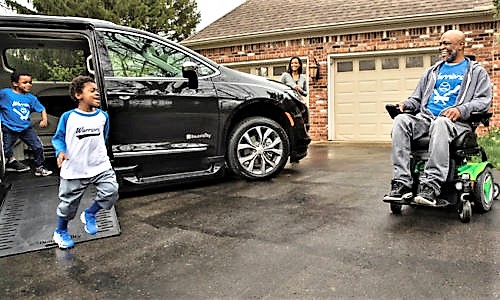If you’re like the majority of the population, mobility is something you take for granted. However, once you or a loved one encounters an illness or disability that results in dependence on a wheelchair, your perspective is likely to change dramatically.
Mobility is a major factor in a person’s independence, but when illness or injury hinders free movement, even a simple task like running to the store becomes a challenge. Fortunately, there are numerous options you can explore to improve mobility and accessibility if you or a loved one becomes reliant on a wheelchair or other assisted mobility.
Ramps in Place of Stairs
Safety is a primary concern for someone whose mobility is limited. Even minor falls can cause significant injuries, particularly for seniors whose bones tend to be more fragile. When a loved one begins experiencing trouble with the steps, a ramp is a good solution. In fact, ramps aren’t just for those who are reliant on a wheelchair or other motorized device like a scooter. They are also a good solution for someone who uses a cane or walker, or someone who experiences pain or difficulty maintaining balance on the stairs.
Accessible Vehicles and Parking
Getting out of the house is an important way to help someone whose mobility is compromised continue to feel connected to the larger world, and practically speaking, even if they’re not physically up to social engagements, chances are that doctor’s appointments will still be a necessity. However, parking limitations cause major challenges for wheelchair users.
Not only is getting in and out of the vehicle a chore, 74 percent of people have personally seen a handicap accessible parking space being improperly used, according to a survey by BraunAbility. As a leading manufacturer of wheelchair accessible vehicles and wheelchair lifts, its Save My Spot campaign works to educate the public about the meaning and importance of handicap accessible parking. In addition to understanding and educating others about the proper usage of handicap accessible parking, chair users may benefit from wheelchair accessible vehicles that provide maximum maneuverability, such as the BraunAbility Chrysler Pacifica, which delivers the most interior cabin space and widest doorway and ramp for ease of entry and exit.
Hand Rails and Grab Bars
Hand rails add another measure of safety in the home. They can add stability and support on staircases, ramps and other walkways, but they’re also beneficial in areas like the bathroom. A rail or grab bar near the toilet can help steady someone raising or lowering to use the facilities. Similarly, rails in or adjacent to the shower can assist with safe transitions into and out of the stall. Remember to follow all manufacturer instructions for installing rails to ensure they provide adequate support and can bear the weight of the user.
Bathroom Modifications
Proper hygiene goes a long way toward promoting overall wellness and independence, but a person with limited mobility may struggle using the features of a standard bathroom. In addition to safety rails and grab bars, devices such as shower stools and raised toilet seats can provide needed support. Depending on your circumstances, it may be necessary to consider renovations to include a roll-in tub or seated shower and a vanity with a counter at an accessible height.
Wider Doors and Hallways
While it’s not always possible to widen doors and hallways, this is an important consideration for someone who is heavily reliant on a wheelchair or other motorized device. If the chair can’t clear hallways and maneuver around corners, a person’s access to the home is severely limited, sometimes to the point of needing to find new housing accommodations. When considering whether the doors and hallways will meet your needs, remember to take into account any accessories or equipment, such as an oxygen tank, that may affect the chair’s turn radius.
Find more ideas to promote independence and mobility at braunability.com/savemyspot.
SOURCE:
BraunAbility











